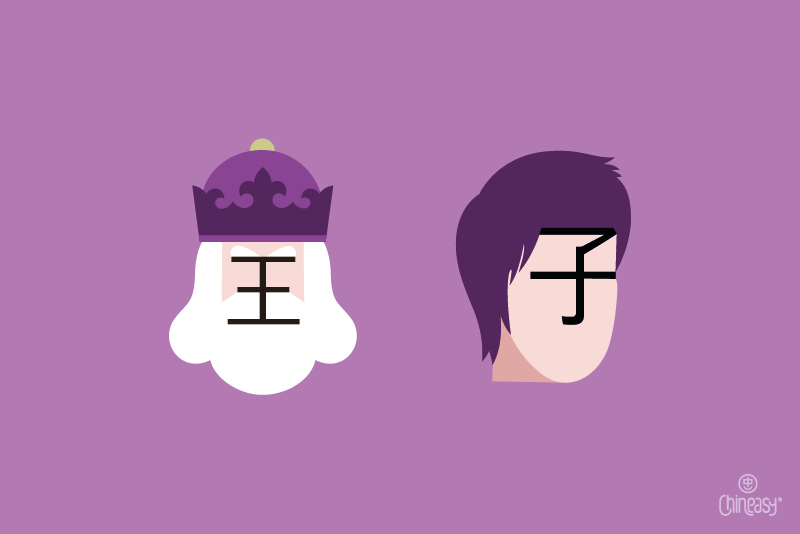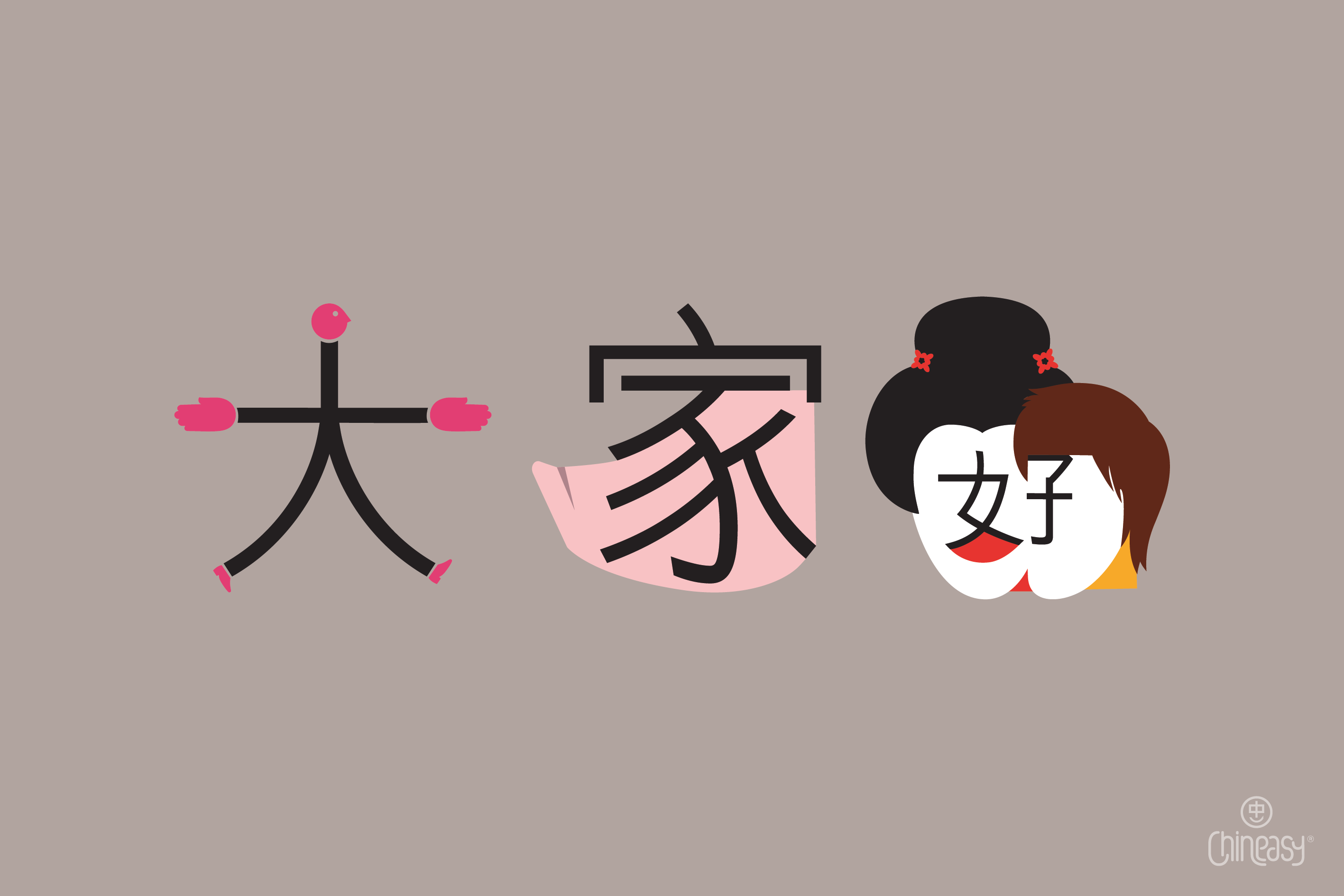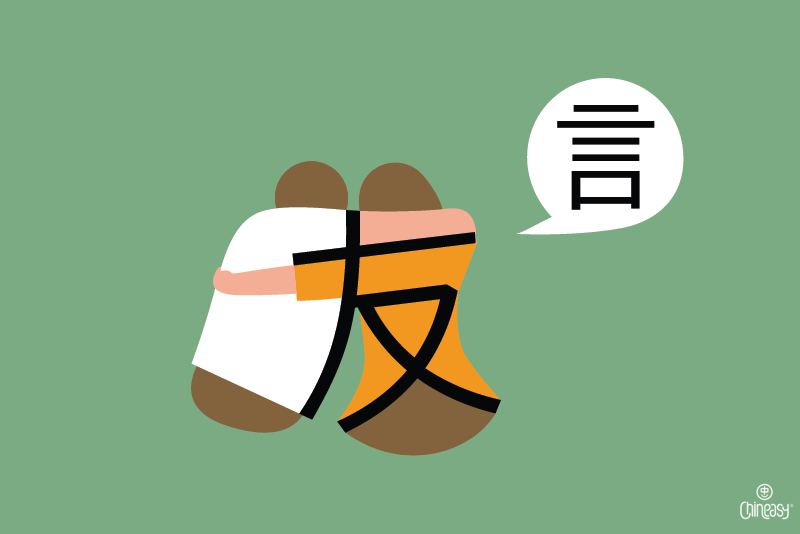Learning a new language can be a fascinating journey, and understanding how to express the months of the year is a fundamental step.
In this post, we’ll introduce you to the Chinese words for the months of July to December. Whether you’re a beginner just starting out or someone looking to brush up on your Mandarin, this guide will provide you with the essential vocabulary you need.
If you’d like to start with January, check out our previous post here.
July 七月
July 七 (Seven) + 月 (Moon/month) = 七月 (qī yuè) (lit. seven moons)
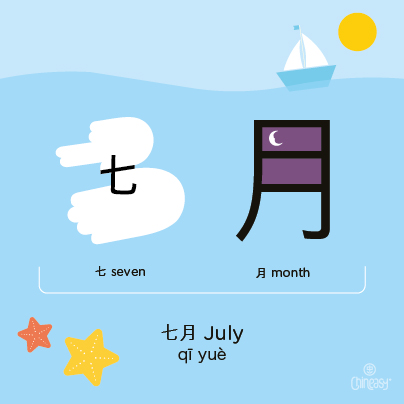
The character 七 means “7,” but this wasn’t always the case!
Originally, in the oracle-bone, bronze, and seal scripts, 七 meant “to cut.” The character conveyed this idea through its form: a horizontal line symbolized an object, and a vertical crossing line indicated the tool breaking the object into pieces.
Over time, the character evolved. The form changed to include 一 and ㄣ, eventually representing the number “7.”
When it comes to the 7th lunar month in the Chinese calendar, it’s commonly known as the Ghost Month (鬼月; guǐ yuè).
This month holds significant cultural importance, as it’s believed that the underworld’s gates open, allowing spirits to roam the earth. People often perform rituals to honor and appease these spirits, making it a fascinating aspect of Chinese tradition.
August 八月
August 八 (Eight) + 月 (Moon/month) = 八月 (bā yuè) (lit. eight moons)
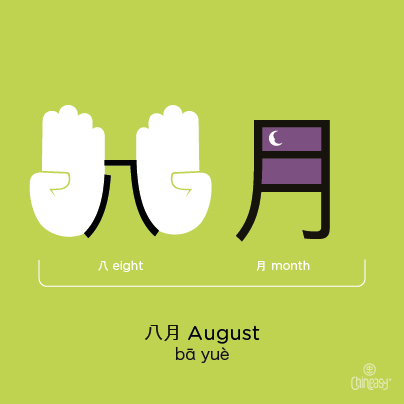
The number 8 is considered super lucky in Chinese culture. For instance, the 2008 Summer Olympics in Beijing began at 8 pm on August 8th, 2008. That’s 8 pm on 8/8/2008! You can read all about this massive event here.
In the oracle-bone inscriptions, 八 depicted two people opposing each other. Interestingly, many Chinese characters include 八 as a radical meaning “contrary,” “dispersion,” or “decomposition,” such as 分 (fēn; to divide).
Today, 八 exclusively means “eight.”
September 九月
September 九 (Nine) + 月 (Moon/month) = 九月 (jiǔ yuè) (lit. nine moons)
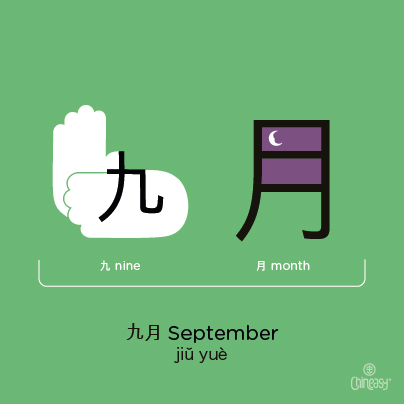
九月 typically marks the beginning of the school year. Students return to their studies with a renewed focus on education and personal development.
This month is also significant in various cultural celebrations and festivals in China, such as the Mid-Autumn Festival (中秋節/中秋节; zhōngqiū jié), which often falls in late September or early October. This festival is celebrated with mooncakes, lanterns, and family gatherings, highlighting the importance of reunion.
October 十月
October 十 (Ten) + 月 (Moon/month) = 十月 (shí yuè) (lit. ten moons)
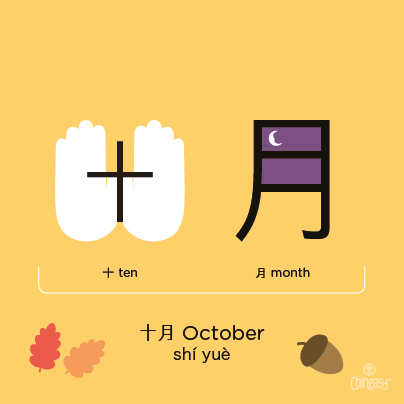
The Chinese character for “ten” is easy; it looks like a cross: 十 (shí).
In the oracle-bone inscriptions, “ten” was represented by a simple vertical line or sometimes a vertical line with a dot in the middle. This referenced a very old way of indicating “ten” by making a knot in a rope.
Later, the dot evolved into the horizontal line in the seal scripts, giving us the cross-like 十 that we use today.
November 十一月
November 十 (Ten) + 一 (One) +月 (Moon/month) = 十一月 (shí yī yuè) (lit. eleven Moons)
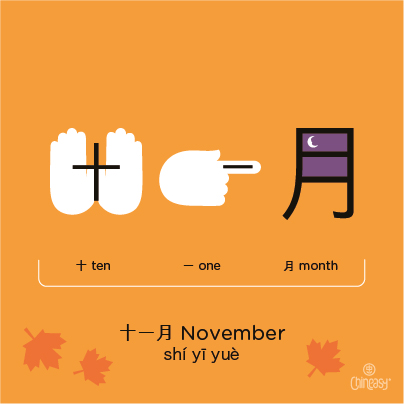
The number 11 in Chinese is written (and spoken) as “ten one.” All you need to do is take the character for 10 (十) and add the character for 1 (一), forming 十一 (shí yī), eleven.
This straightforward combination reflects the simplicity and logical structure of Chinese numerals.
December 十二月
December 十 (Ten) + 二 (Two) +月 (Moon/month) = 十二月 (shí èr yuè) (lit. twelve Moons)
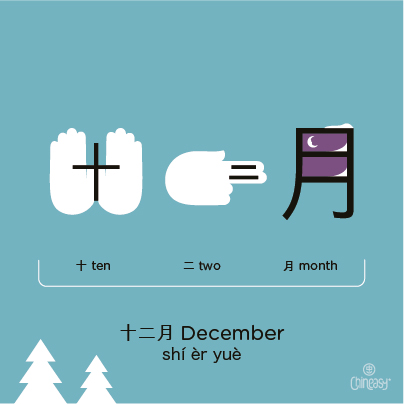
Similar to the number eleven, in Chinese, twelve is a combination of 十 (ten) and 二 (two), forming 十二 (shí èr). To write December in Chinese, take the number 十二 (12) and add 月 (yuè), resulting in 十二月.
December is a festive month in China, marked by several important celebrations. One of the key festivals is the Winter Solstice Festival (冬至; dōngzhì), usually occurring around December 21st or 22nd. It is a time for families to gather and enjoy special foods like tangyuan (glutinous rice balls), symbolizing reunion and harmony.
Additionally, Christmas (聖誕節/圣诞节; shèngdàn jié) has gained popularity, especially in urban areas, where you can see festive decorations and celebrations in many cities across China.
Here you have it – the Chinese words for July (七月), August (八月), September (九月), October (十月), November (十一月), and December (十二月). Through this exploration of these months, you’ve not only learned new vocabulary but also delved into the fascinating etymology of several characters.
Additionally, we’ve highlighted important cultural festivals, offering a glimpse into the rich traditions that make these months special in China. Whether you’re a beginner in Mandarin or simply curious about Chinese culture, we hope this journey has been both educational and enjoyable.
Keep exploring, and happy learning!
